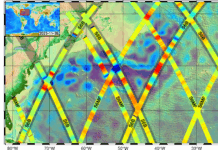Transitioning Away from QEMU: A New Chapter for Docker Desktop on Apple Silicon Macs
Docker Desktop has announced a significant change for its users operating on Apple Silicon Macs. The company plans to phase out the QEMU virtualization option, which has been a key component of Docker Desktop during its initial adaptation to the Apple Silicon architecture. This deprecation will take effect 90 days from now, culminating on July 14, 2025. It’s important to note that while QEMU is being phased out in this context, it will continue to serve its purpose in emulating non-native architectures for multi-platform builds. Users are encouraged to transition to either the Apple Virtualization Framework or the Docker Virtual Machine Manager (VMM) to ensure they benefit from optimal performance.
Understanding the Motivation Behind the Change
The decision to move away from QEMU is driven by data collected through Docker’s telemetry. It has been observed that a minimal fraction of users still rely on QEMU within Docker Desktop. While QEMU support was maintained for backward compatibility, the time has come to prioritize more advanced alternatives. Both Docker VMM and the Apple Virtualization Framework offer several advantages over QEMU:
- Enhanced Performance: These newer options provide significantly faster performance than QEMU.
- Improved Stability: Users will experience fewer crashes and errors with these more stable solutions.
- Seamless macOS Integration: The newer frameworks are more compatible with macOS updates, ensuring a smoother experience.
- Optimized for Apple Silicon: They are better aligned with the architecture of Apple Silicon, enhancing overall efficiency.
Implications for Current Users
For those currently using QEMU as their Virtual Machine Manager (VMM) on Docker Desktop for Mac, the transition should be relatively smooth. Here is what you can expect:
- Your existing setup will continue to function normally for the next 90 days while you plan your migration.
- Post July 1, 2025, Docker Desktop updates will automatically transition your system to the Apple Virtualization Framework.
- This update promises to offer improved performance and stability compared to QEMU.
The Migration Process
Docker has outlined a clear migration plan to ensure that the transition is as seamless as possible:
- Users on the latest version of Docker Desktop will undergo an automatic migration to the Apple Virtualization Framework at the end of the 90-day transition period.
- During this period, users can also manually switch to Docker VMM, which is optimized for speed on Apple Silicon Macs, or the Apple Virtualization Framework, via the settings menu: Settings > General > Virtual Machine Options.
- Should any issues arise during the transition, the QEMU option will remain available in settings for an additional 30 days post-deprecation date.
- After this grace period, QEMU will be entirely removed from the available options.
Steps to Take Now
To ensure a smooth transition, it is advisable for users to proactively switch to one of the newer VMM options before the automatic migration takes place. Here are the steps you should follow:
- Update to the latest version of Docker Desktop for Mac.
- Navigate to Docker Desktop Settings > General.
- Under the "Choose Virtual Machine Manager (VMM)" section, select one of the following:
- Docker VMM (BETA): This is the fastest option currently available for Apple Silicon Macs.
- Apple Virtualization Framework: A mature and high-performance alternative.
Addressing Questions and Concerns
Docker is committed to ensuring a smooth transition for all users. If you have any questions or encounter issues during the migration, the company encourages users to reach out for support. The goal is to provide a seamless development experience on macOS, leveraging the best available technology.
Additional Insights
The deprecation of QEMU marks a significant shift in the virtualization strategy for Docker Desktop on Apple Silicon Macs. As technology continues to evolve, it is crucial for software solutions to adapt and optimize for the latest hardware advances. This transition is a testament to Docker’s commitment to providing a robust and efficient development environment for its users.
In the broader context of virtualization technology, this move aligns with a growing industry trend that emphasizes performance and integration. The Apple Silicon architecture has introduced new possibilities for software optimization, and Docker’s shift to Apple Virtualization Framework and Docker VMM exemplifies this potential.
For developers and IT professionals, understanding the nuances of virtualization technology is becoming increasingly important. Virtual machines enable the isolation of applications and services, allowing for a more controlled and secure computing environment. With options like Docker VMM, users can benefit from faster boot times, reduced resource consumption, and enhanced security features.
As we look to the future, the role of virtualization will continue to expand, with more efficient and integrated solutions emerging. Docker’s proactive approach in phasing out legacy solutions like QEMU in favor of more advanced options is a positive step towards a more streamlined and effective development ecosystem.
For those interested in exploring the technical details of virtualization frameworks, it’s worth considering the broader implications of these technologies. Virtualization not only aids in the development and testing of applications but also plays a critical role in cloud computing, enabling the efficient management of resources across vast distributed networks.
In conclusion, the deprecation of QEMU for Docker Desktop on Apple Silicon Macs is a forward-thinking move that reflects the rapid advancements in software and hardware integration. By embracing newer, more efficient technologies, Docker is setting the stage for a future where developers can fully leverage the power of Apple Silicon, ensuring that their applications run smoothly and efficiently. This transition represents not just a change in technology but a commitment to providing the best possible experience for users in an ever-evolving digital landscape.
For more Information, Refer to this article.


































